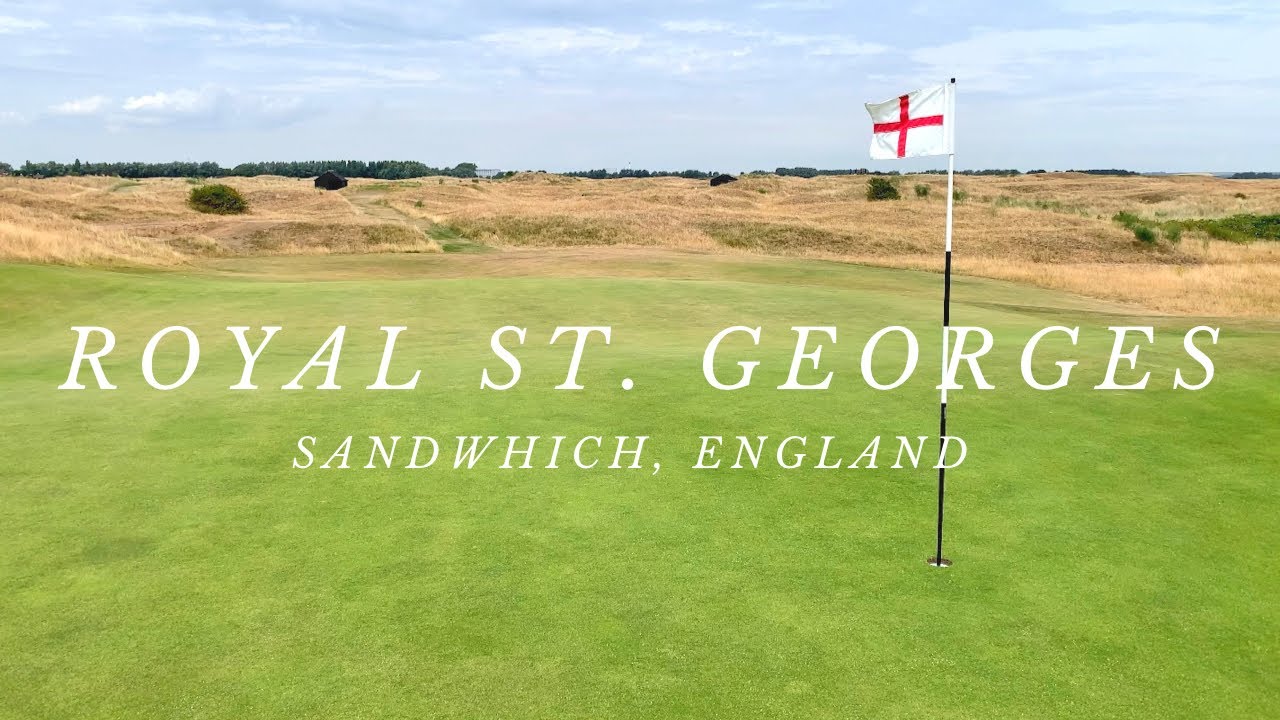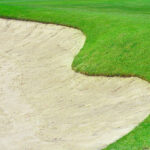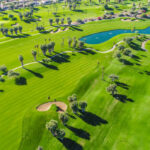The game of golf is one that has been around for centuries and involves a lot more than simply hitting a few balls with a club. Each shot requires precision, accuracy, skill and sometimes even luck to execute properly. Not only that, but being in tune with the links course gives you an edge over other competitors. With this post, we’ll explore what are the links in golf and how recognizing them will help you improve your game on the green.
Contents
- 1 What are the links in golf?
- 2 What is true links golf course?
- 3 Basic history of the links in golf
- 4 What makes a links golf so special?
- 5 Characteristics of a links golf course
- 6 Maintenance on a links golf course
- 7 Famous links golf courses now
- 8 Where do you play links golf course?
- 9 How to plan a trip to links golf course?
- 10 How to play links golf?
What are the links in golf?
Links golf are the oldest style of golf courses, originally developed in Scotland. The term “links” derives from the Scots language and encompasses coastal sand dunes, as well as open parkland. In Scottish English dialect, “links” continues to denote this broader definition. Links courses are typically situated on sandy coastlines, delivering a more solid playing surface compared to parkland and heathland courses.
What is true links golf course?
A true links golf course is predominantly located in Scotland, Ireland, and England. These coastal courses are characterized by their sandy soil, which was ideal for the game’s origin and not suitable for many other purposes.
Basic history of the links in golf
Links golf courses originated in Scotland, where the game of golf was played on natural courses along the coast. These courses, situated on common land deemed unsuitable for farming or development, were shaped by nature and required golfers to adapt their game to the natural terrain and obstacles. Links courses have also played a significant role in the history of professional golf. The Open Championship, the oldest of the four major championships in professional golf, has been held primarily on links courses since its inception. The inaugural Open Championship took place in 1860 at Prestwick Golf Club, one of the first formal links courses. Over the years, the tournament has been hosted at renowned and challenging links courses such as St. Andrews, Muirfield, and Royal Birkdale.
What makes a links golf so special?

See more : What To Wear Golfing For The First Time Ladies? Outfit Guide
Links golf courses are renowned for their distinctive characteristics and unique challenges, setting them apart from regular courses. Unlike manufactured courses, links courses embrace the natural lay of the land, reflecting the origins of the game. Their demanding nature, combined with the unpredictable conditions they can present, put a golfer’s ability to the test. Playing on a links course requires working with the elements and calls for a blend of creativity, risk-taking, and, at times, even a touch of luck. It is this combination of factors that makes links golf so extraordinary and captivating.
Characteristics of a links golf course
Links golf courses are distinguished by their natural features, notably their coastal setting. These locations provide stunning vistas of the ocean, undulating sand dunes, and tall grasses. The absence of trees and artificial obstacles means that the wind greatly influences gameplay, necessitating golfers to adjust their shots based on wind direction and speed.
In addition, links courses are known for their rough terrain, which is often uneven and unpredictable. Bumps, slopes, and hollows add difficulty in predicting the ball’s trajectory and speed, while pot bunkers and tall grasses create further hazards that golfers must navigate. Due to these inherent challenges and uncertain conditions, links courses are widely regarded as the ultimate test of skill and strategy. Golfers must adapt their game and develop new strategies to triumph over the unique demands of these courses.
Maintenance on a links golf course
Maintenance on a links golf course requires careful considerations due to its unique characteristics. Some notable aspects include:
- Minimal irrigation: Links courses, typically built on well-draining sandy soil, require minimal irrigation to maintain fast fairways and firm putting surfaces.
- Natural hazards: These courses incorporate natural hazards like bunkers and dunes, which necessitate a delicate balance between preserving their beauty and minimizing interference with gameplay. Maintenance of these hazards often involves skilled manual labor.
- Naturalization efforts: Located in ecologically sensitive areas like coastal dunes, links courses increasingly emphasize naturalization efforts. This involves planting native vegetation, removing invasive species, and preserving wildlife habitats.
Famous links golf courses now

Here are some renowned links golf courses that every golf enthusiast should know about, and perhaps consider visiting at least once:
- St. Andrews Links, Scotland
- Royal County Down Golf Club, Northern Ireland
- Royal Birkdale Golf Club, England
- Pebble Beach Golf Links, California
- Royal Portrush Golf Club, Northern Ireland
Where do you play links golf course?
See more : How To Read A Golf Scorecard? | Everything You Need To Know
Links golf courses can be found in various parts of the world, with a significant number located in the UK and Ireland. The ‘The Links Association’ recognizes 246 true links courses globally at present. Apart from the UK and Ireland, you can also find a considerable number in New Zealand, Australia, and North America. It’s important to note that some golf courses claim to be links courses, but they may not meet the exact criteria. To be considered a true links course, a golf course must be built on natural links land and maintain the specific design and layout described earlier. Some notable examples of links courses include:
The Old Course at St Andrews Links
Located in Fife, Scotland, it is the oldest and most iconic golf course worldwide, with a documented history dating back to 1552. The Swilcan Bridge and Hell Bunker are well-known features, and despite its prestigious status, the Old Course remains a public golf course.
Royal County Down
Situated in the Murlough Nature Reserve in Northern Ireland, it boasts one of the world’s most naturally stunning links settings. The course features renowned “bearded” bunkers and challenging greens that demand skilled execution of the traditional ‘bump and run’ style of play.
Royal St George’s

Found in Sandwich, Kent, this golf club has a rich golfing heritage and has hosted both amateur and professional tournaments since the 1880s. It is regarded as one of England’s finest links courses and has hosted The Open Championship on fourteen occasions, with a fifteenth scheduled for 2020.
How to plan a trip to links golf course?
Plan a trip to a links golf course with these steps:
- Choose your destination: Consider factors such as location, course quality, and overall experience in the area.
- Book your accommodation: Many links courses offer on-site lodging for a convenient golfing experience. Look for partner discounts on golf vacation packages, equipment, and more.
- Plan your itinerary: Besides golfing, explore local attractions, regional cuisine, and the natural beauty of the area. Golf vacation packages may include transportation, sightseeing tours, and other activities.
- Book your tee times: Since links courses can be popular and busy, book tee times well in advance to secure preferred dates and times.
- Pack accordingly: Prepare for unpredictable weather by bringing waterproof gear, a windproof sweater or vest, a hat for sun and wind protection, and waterproof golf shoes for better traction.
- Study the course: Familiarize yourself with the course layout, specific rules, and hazards. Note any difficult-to-spot bunkers, blind shots, or other unique challenges.
- Stay mentally sharp: Playing on a links course requires adapting to changing weather and terrain conditions. Stay hydrated, take breaks when needed, and appreciate the natural beauty around you.
How to play links golf?
To play links golf effectively, follow these tips and strategies:
- Adapt to the terrain and elements: Links courses present unique challenges. Be prepared to adjust your game according to factors like wind and weather conditions.
- Prioritize accuracy, distance control, and shot shaping: Instead of relying solely on power, focus on precise shots that consider the course layout.
- Utilize the bump-and-run technique: Due to firm and fast fairways, landing the ball on the green can be difficult with high shots. Employ a low trajectory shot with spin to make the ball roll towards the pin.
- Factor in the wind: The wind significantly impacts shots on links courses. Assess the wind direction and speed before swinging and make necessary adjustments. Hit into the wind and utilize the wind’s assistance when it’s behind you.
- Perfect your putting: Links courses often have large and undulating greens. Practice reading slopes, gauging the speed, and considering contours that affect your ball’s direction and speed.
- Embrace creativity: Navigating natural hazards and terrain sometimes requires unconventional shot-making. Feel free to experiment with different techniques and shots to maneuver the course effectively.

Jamie Sadlowski is one of the most remarkable golfers in the world. He’s a two-time World Long Drive Champion, and he’s currently ranked 4th in the world. His story is one of perseverance, hard work, and passion for the game. Let’s take a closer look at this inspiring athlete.
The Early Years
Jamie Sadlowski was born in St. Paul, Alberta, Canada. He started playing golf at a young age and quickly developed an affinity for the sport. As he grew older, his passion for golf only deepened and he eventually decided to pursue it as a career. After graduating from high school in 2006, Jamie enrolled at the University of Nebraska-Lincoln where he studied business and played collegiate golf for three years. In 2009, he decided to leave college early to pursue his dream of becoming a professional golfer .








Best golf experience I ever had was a links course. Played Chamber Bay. Even for being in the U.S. and the Pacific Northwest it was cool, dry, baked out, and windy. The view of water surrounding the course was astounding. Definitely worth the $190 to play. Walking only.
This looks great!
I played my first true links course this past summer, Ballybunion is Ireland, and it was just a different experience. From the terrain, to the different types of shots that are required, to the VIEWS, to the people, just amazing. I would recommend a visit to anywhere in the UK if you’re a golfer to experience what Mark and the boys are trying to convey in this video, it will change your (golfing) life.
Yes, I agree
I grew up playing links courses. Never a flat lie, crazy bounces and really makes you think about how to play chip and run – into the wind from 60 yards a 5i bump and run (would now use my hybrid) is a real shot
Oh, Thanks for your sharing!